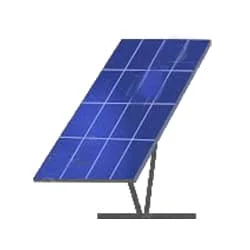Solar Panel 12v DC System:
This Diagram Shows 12v Solar Panels Convert Solar Energy Into DC Electricity, Which is Then Converted to AC Power to Be Used By Domestic Appliances. Solar Cells, Also Called Photovoltaic Cells (PV), Convert Solar Energy Into Electric Power. It's a Device That Converts Direct Current (DC) Electricity, Which is What a Solar Panel Generates, to Alternating Current (AC) Electricity, Which The Electrical Grid Uses. In DC, Electricity Is Maintained At a Constant Voltage in One Direction.
Diagram of Solar Panel 12v DC System wiring:
Components Need for this Project:
You can get the components from any of the sites below:
- Solar Panel [See Buy Click Amazon]
- Solar Charge Controller [See Buy Click Amazon]
- Switch [See Buy Click Amazon]
- 12V DC Lights [See Buy Click Amazon]
- 12V Battery [See Buy Click Amazon]
*Please note: These are affiliate links. I may make a commission if you buy the components through these links. I would appreciate your support in this way!
Read Also:
Components used to make the Solar Panel 12v DC System:
01. Solar Panel
 |
| Fig 2: Solar Panel |
Photovoltaic solar panels can generate electricity directly from sunlight. Photovoltaic (PV) modules are connected assemblies of photovoltaic solar cells available in a package of various voltages and wattages, but not direct sunlight. And the sun also does not transmit electricity directly to the earth. Sends light and heat. It has to convert our electricity in different ways. We get heat energy from the sun very easily. Instead, it transmits light and heat.
02. Solar Charge Controller
 |
| Fig 3: Solar Charge Controller |
The function of a solar charge controller is to charge the battery by regulating the voltage and current coming from the solar. That is, reduce the voltage slightly so that the battery cell is not damaged due to high voltage. It's called a controller rather than a charger because it's so smart. Automatically provides proper power to the battery according to over voltage, over the current, short circuit, and battery temperature. There are two types of charge controllers. PWM and MPPT, PWM is relatively cheaper but has lower efficiency. On the other hand, good quality MPPTs are very efficient and offer maximum safety to the battery.
03. Switch
 |
| Fig 4: Switch |
A Single-Pole, Single-Throw (SPST) Switch. It's Got one Output and One Input. The Switch will Either be Closed or Completely Disconnected. SPSTs are Perfect for on-off Switching. They're also a Very Common Form of Momentary Switches. SPST Switches are Commonly Used in a Variety of Electrical Circuits and Applications, Such as Turning on And off Lights, Fans, and Other Appliances. They can Also be Used to Control the Flow of Electricity to Different Parts of a Circuit or to Switch Between Different Circuits Altogether.
04. 12V DC Lights
 |
| Fig 5: 12V DC Lights |
CFLs work in a completely different way from ordinary lamps, they work by using a different process called fluorescence rather than generating light from heat. A typical light bulb wastes 90% of energy and converts only 10% of energy into light, this is where CFL has the biggest advantage. CFL- Curved or conical glass tube filled with argon and a small amount of mercury vapor. The inner wall of the glass is coated with fluorescent material. CFL- It is manufactured using the principle of creating fluorescent light. CFL- Originally white in color but now the construction and use of CFLs producing colored light has become popular.
05. 12V Battery
 |
| Fig 6: 12V Battery |
A 12-volt Battery is an Irregular Battery used in Specific Electronic Applications. Of all the types of Batteries, the 12-Volt Battery is one That Looks Very Different Depending on its use. It can be Large or small, Heavy or Light. Twelve-volt batteries are commonly used in RV, Boat, and Other Automobiles Systems. From a Technical Perspective, a Battery Uses one or more cells to Allow a Chemical Reaction Creating the flow of Electrons in a Circuit.
Thank You for visiting the website. Keep visiting for more Updates


Post a Comment
Do leave your comments